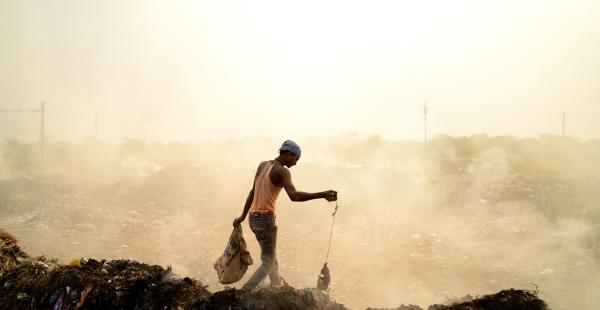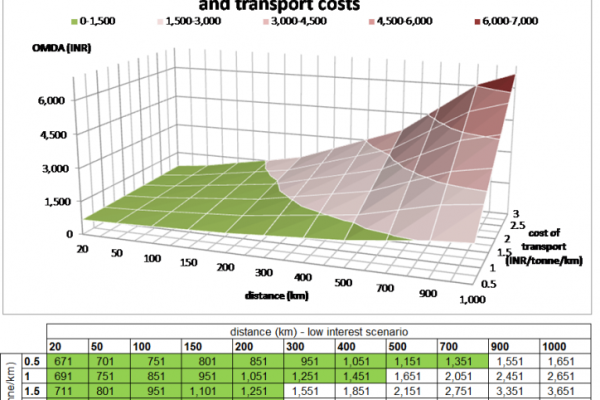
Waste NAMA to promote co-processing of municipal solid waste (MSW) based refused derived fuel (RDF) in cement kilns in India
In its Nationally Determined Contributions, India has committed to reduce the emission intensity of its GDP by 33 to 35 per cent by 2030 from 2005 level. The waste and forest sectors have been identified as priority areas to achieve such emission reduction. Nationally Appropriate Mitigation Actions (NAMAs) are effective tools for achieving these objectives and GIZ is supporting the Indian Ministry of Environment, Forest and Climate Change (MoEFCC) in developing NAMAs in both forest and waste sector.
Due to rapidly rising waste quantities, effective waste management is a priority area for the Government of India. There is significant potential to also lower the emission in the waste sector as it is the second largest methane, a high global warming potential GHG, emitter in the country. Untreated MSW currently leads to GHG emissions of around 19 million tons of CO2eq which are expected to grow to 41 million tons CO2eq in a Business as Usual (BAU) scenario by 2030. Cities with >1 million population will contribute >50% of total emission by 2030.
The waste NAMA focuses on “Co-processing of MSW based RDF in cement kilns” at the national level in which all cities and towns having more than 20,000 population within 200kms of existing 180 cement plants are considered. Currently, the use of RDF from MSW in cement kilns is at a nascent stage in India with the industry wide thermal substitution rate (TSR) estimated to be 1% (the average TSR in the EU is approximately 40%). The NAMA implementation can achieve a TSR of 18.8% by 2030 at cement plants, very close to the 19% goal established in the cement sector’s Technology Roadmap[1]. This means that 3.1 million tonnes of fossil fuel per year would be replaced by RDF.
The cost of RDF production in India is much higher than the price that cement plants are willing to pay. The NAMA will help address this challenge by suggesting fiscal incentive in form of output-based market development assistance (OMDA) (see figure), by developing standards of RDF and long term agreements between municipal bodies, waste management companies for RDF production and cement industry.
Total emission reductions generated over the NAMA period 2018-2030 will reach 183.5 million tCO2e, i.e. 73.3% of baseline emissions in which 59% reduction will be achieved from fossil fuel replacement and 41% due to methane avoidance. Additionally, the NAMA will provide important economic, social and environmental sustainable development co-benefits.
[1] IEA, WBCSD - Technology Roadmap (2012)


